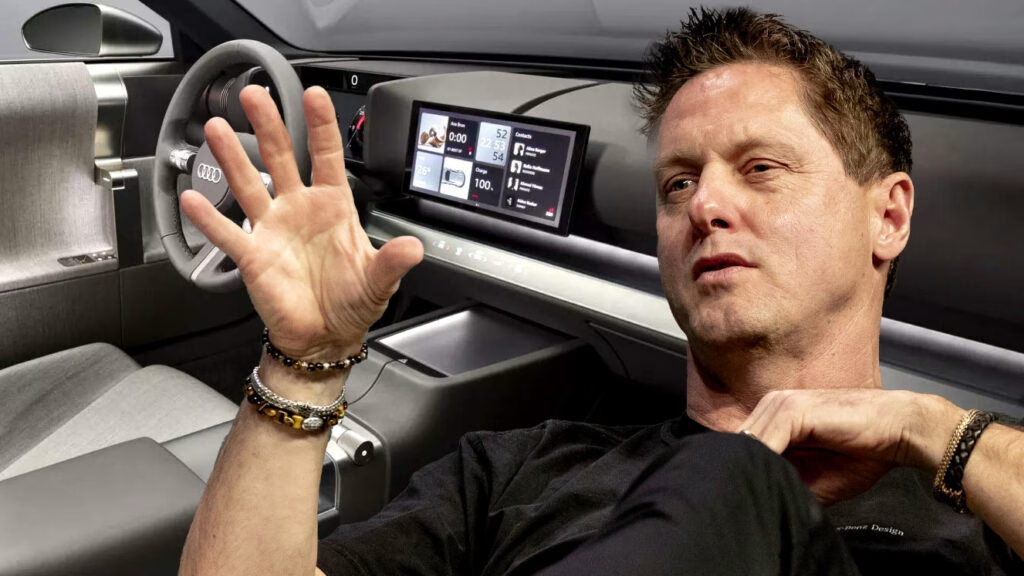Why Did Mercedes’ Design Boss Call Audi’s Concept C Interior Outdated?
When Gorden Wagener, Mercedes’ Chief Design Officer, took a look at Audi’s Concept C interior at the Munich Motor Show, he didn’t hold back. In his words, the cabin “looks like it was designed in 1995.” That’s a stinger, especially coming from someone who’s spent decades shaping the look and feel of some of the world’s most prestigious cars.
So, what’s behind this critique? Wagener’s main gripe is that Audi’s Concept C interior plays it too safe. The design is minimalist, yes, but he argues it’s “a little bit too known, and there is too little tech.” In an era where car interiors are racing to outdo each other with digital wizardry, Audi’s decision to use a retractable 10.4-inch infotainment screen that tucks away when not in use feels almost retro. For a concept car—meant to showcase the future—Wagener thinks it misses the mark.
It’s worth noting that Audi’s production models aren’t exactly stuck in the past. The Q5, for example, comes with an 11.9-inch digital cluster, a 14.5-inch infotainment screen, and an optional 10.9-inch passenger display. But compared to the Mercedes GLC EV’s 39.1-inch MBUX Hyperscreen, Audi’s approach seems modest. Wagener’s point? In today’s market, big, bold screens are what signal progress.
Are Big Screens Really Essential in Modern Car Interiors?
This is where the debate gets interesting. Wagener, despite calling himself a fan of “hyper-analogue things,” insists that you simply can’t ignore the importance of screens in modern vehicles. “When you have a small screen, you automatically send the message ‘congratulations, you are sitting in a small car,’” he quipped. Ouch.
He’s not alone in this thinking. According to a 2023 J.D. Power study, 70% of new car buyers say the size and quality of in-car displays influence their purchase decisions. Screens have become the new status symbol, replacing wood trim and chrome accents as the must-have feature.
But it’s not just about looking high-tech. Wagener points out that screens provide a necessary visual reference, whether you’re navigating, adjusting climate controls, or streaming a movie while parked. He does acknowledge that voice assistants powered by large language models will play a bigger role in the future, but for now, people want both: touchscreens for control, and voice for convenience.
Is BMW’s Neue Klasse Interior Too Complex for Its Own Good?
Audi wasn’t the only target of Wagener’s candor. When asked about BMW’s Neue Klasse interior, first seen in the upcoming iX3, he was equally blunt. The new BMW setup features a pillar-to-pillar display at the base of the windshield, a 17.9-inch center touchscreen, and an optional 3D head-up display. On paper, it sounds futuristic. In practice? Wagener thinks it’s overcomplicated.
His main criticism: the information spread across multiple levels is distracting and not intuitive. “It’s so far away it’s hard to read. Everything appears smaller, so it’s distracting, and you need a device to operate it because it’s too far away to be touch-sensitive,” he explained. The result? A system that tries to be progressive but ends up feeling convoluted.
This isn’t just nitpicking. User experience studies from the past year show that drivers are increasingly frustrated with overly complex infotainment systems. A 2024 Consumer Reports survey found that 41% of respondents had trouble with multi-layered menu structures and non-intuitive controls, leading to lower satisfaction scores for brands that overcomplicate things.
How Do Mercedes’ Own Interiors Stack Up?
It’s easy to throw stones, but Mercedes isn’t immune to criticism either. The GLC EV’s massive Hyperscreen is a showstopper, stretching nearly the entire width of the dashboard. It’s a clear flex, signaling Mercedes’ commitment to digital luxury. Yet, the brand also knows when to dial it back. The Concept AMG GT XX, for instance, pairs a 10.25-inch digital cluster with a 14-inch infotainment screen—more restrained, but still modern.
This flexibility is key. Mercedes seems to understand that not every model, or every customer, wants the same tech-forward experience. Performance models get focused, driver-centric displays. Luxury EVs get the full digital treatment. It’s about matching the tech to the car’s personality and the needs of its audience.
What’s the Real Future of Car Interiors—Screens, Switches, or Something Else?
If you listen to Wagener, the answer is clear: big screens are here to stay, at least for mainstream vehicles. But the story isn’t quite that simple. As voice assistants become smarter and more reliable, we may see a gradual shift away from touchscreens as the primary interface. Still, for now, most drivers want the reassurance of a physical or visual control—something to tap, swipe, or glance at.
There’s also a growing pushback against screen overload. Some automakers are experimenting with bringing back physical switches for key functions, responding to customer complaints about having to dig through menus just to adjust the air conditioning. The sweet spot? Probably a blend of tactile controls for essentials and large, intuitive screens for everything else.
The big takeaway? Designing the perfect car interior isn’t about perfection—it’s about smarter adjustments. Start with one change this week, and you’ll likely spot the difference by month’s end. Whether you’re shopping for a new ride or just dreaming about the future, keep an eye on how brands balance tech, usability, and style. That’s where the real magic happens.

